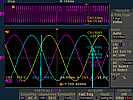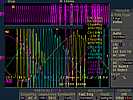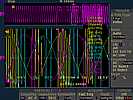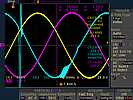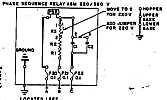Big day, lots of folks:
- Further investigation of 50 Hz power supply problems
- Banging our heads on problems - see extensive report below.
- Comments by Grady Keeton of Elgar technical support.
- Start of search for more 1401 schematics and documentation in CHM archives with archivist Paula Jabloner
- - Milt Thomas spent full time sorting material and filling forms for data base entry - Paula had hoped for more people to press this ahead but problems with power ( #1 above) sucked off help
- Continue 729 tape restoration
- after giving up on Elgar as power supply for 1401, Allen and Ed tested the second 729 tape unit :-))

Somehow, I thought electronics was a white collar job. IBM folks in blue suits saying "Yes Sir", and I don't know what else ;-)) Is that Ed Thelen back seat driving, or contributing or ... - Actually, the sad fact is that we could not remember how we tested an identical power supply a month ago, and are re-discovering how. :-((
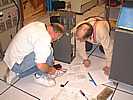
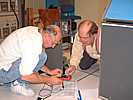
- Continue 1402 reader/punch - replacement and work

goodDon Cull exchanged the Punch Feed mechanism with the Visable Storage 1402 
bad- Continue 1403 printer -chain and restoration
- Frank King continued work on chain. When he turned on the 1403 printer power when the 1401 was powered up, the Elgar power supply quit.
- Banging our heads on problems - see extensive report below.
Details below
Ed Thelen - Recorder
